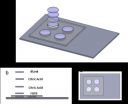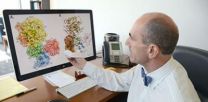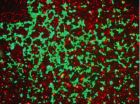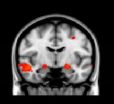(Press-News.org) CORVALLIS, Ore. – Chemists and students in science and engineering at Oregon State University have created a new type of chemical test, or assay, that's inexpensive, simple, and can tell whether or not one of the primary drugs being used to treat malaria is genuine – an enormous and deadly problem in the developing world.
The World Health Organization has estimated that about 200,000 lives a year may be lost due to the use of counterfeit anti-malarial drugs. When commercialized, the new OSU technology may be able to help address that problem by testing drugs for efficacy at a cost of a few cents.
When broadly implemented, this might save thousands of lives every year around the world, and similar technology could also be developed for other types of medications and diseases, experts say.
Findings on the new technology were just published in Talanta, a professional journal.
"There are laboratory methods to analyze medications such as this, but they often are not available or widely used in the developing world where malaria kills thousands of people every year," said Vincent Remcho, a professor of chemistry and Patricia Valian Reser Faculty Scholar in the OSU College of Science, a position which helped support this work.
"What we need are inexpensive, accurate assays that can detect adulterated pharmaceuticals in the field, simple enough that anyone can use them," Remcho said. "Our technology should provide that."
The system created at OSU looks about as simple, and is almost as cheap, as a sheet of paper. But it's actually a highly sophisticated "colorimetric" assay that consumers could use to tell whether or not they are getting the medication they paid for – artesunate - which is by far the most important drug used to treat serious cases of malaria. The assay also verifies that an adequate level of the drug is present.
In some places in the developing world, more than 80 percent of outlets are selling counterfeit pharmaceuticals, researchers have found. One survey found that 38-53 percent of outlets in Cambodia, Laos, Myanmar, Thailand and Vietnam had no active drug in the product that was being sold. Artesunate, which can cost $1 to $2 per adult treatment, is considered an expensive drug by the standards of the developing world, making counterfeit drugs profitable since the disease is so prevalent.
Besides allowing thousands of needless deaths, the spread of counterfeit drugs with sub-therapeutic levels of artesunate can promote the development of new strains of multi-drug resistant malaria, with global impacts. Government officials could also use the new system as a rapid screening tool to help combat the larger problem of drug counterfeiting.
The new technology is an application of microfluidics, in this instance paper microfluidics, in which a film is impressed onto paper that can then detect the presence and level of the artesunate drug. A single pill can be crushed, dissolved in water, and when a drop of the solution is placed on the paper, it turns yellow if the drug is present. The intensity of the color indicates the level of the drug, which can be compared to a simple color chart.
OSU undergraduate and graduate students in chemistry and computer science working on this project in the Remcho lab took the system a step further, and created an app for an iPhone that could be used to measure the color, and tell with an even higher degree of accuracy both the presence and level of the drug.
The technology is similar to what can be accomplished with computers and expensive laboratory equipment, but is much simpler and less expensive. As a result, use of this approach may significantly expand in medicine, scientists said.
"This is conceptually similar to what we do with integrated circuit chips in computers, but we're pushing fluids around instead of electrons, to reveal chemical information that's useful to us," Remcho said. "Chemical communication is how Mother Nature does it, and the long term applications of this approach really are mind-blowing."
Colorimetric assays have already been developed for measurement of many biomarker targets of interest, Remcho said, and could be expanded for a wide range of other medical conditions, pharmaceutical and diagnostic tests, pathogen detection, environmental analysis and other uses.
With a proof of concept of the new technology complete, the researchers may work with the OSU Advantage to commercialize the technology, ultimately with global application. As an incubator for startup and early stage organizations, OSU Advantage connects business with faculty expertise and student talent to bring technology such as this to market.
INFORMATION: END
New assay to spot fake malaria drugs could save thousands of lives
2014-07-15
ELSE PRESS RELEASES FROM THIS DATE:
3-D nanostructure could benefit nanoelectronics, gas storage
2014-07-15
A three-dimensional porous nanostructure would have a balance of strength, toughness and ability to transfer heat that could benefit nanoelectronics, gas storage and composite materials that perform multiple functions, according to engineers at Rice University.
The researchers made this prediction by using computer simulations to create a series of 3-D prototypes with boron nitride, a chemical compound made of boron and nitrogen atoms. Their findings were published online July 14 in the Journal of Physical Chemistry C.
The 3-D prototypes fuse one-dimensional boron nitride ...
TGen-led study finds likely origin of lung fungus invading Pacific Northwest
2014-07-15
FLAGSTAFF, Ariz. - Cryptococcus gattii, a virulent fungus that has invaded the Pacific Northwest is highly adaptive and warrants global "public health vigilance," according to a study by an international team led by the Translational Genomics Research Institute (TGen).
C. gattii, which likely originated in Brazil, is responsible for dozens of deaths in recent years since it was first found in 1999 on Vancouver Island, British Columbia, Canada, well outside its usual tropical habitats.
"We identified several genes that may make the outbreak strains more capable of surviving ...
Rice nanophotonics experts create powerful molecular sensor
2014-07-15
Nanophotonics experts at Rice University have created a unique sensor that amplifies the optical signature of molecules by about 100 billion times. Newly published tests found the device could accurately identify the composition and structure of individual molecules containing fewer than 20 atoms.
The new imaging method, which is described this week in the journal Nature Communications, uses a form of Raman spectroscopy in combination with an intricate but mass reproducible optical amplifier. Researchers at Rice's Laboratory for Nanophotonics (LANP) said the single-molecule ...
SLU scientists hit 'delete': Removing regions of shape-shifting protein explains how blood clots
2014-07-15
ST. LOUIS – In results recently published in Proceedings of the National Academy of Sciences (PNAS), Saint Louis University scientists have discovered that removal of disordered sections of a protein's structure reveals the molecular mechanism of a key reaction that initiates blood clotting.
Enrico Di Cera, M.D., chair of the Edward A. Doisy department of biochemistry and molecular biology at Saint Louis University, studies thrombin, a key vitamin K-dependent blood-clotting protein, and its inactive precursor prothrombin (or coagulation factor II).
"Prothrombin is essential ...
New skin gel fights breast cancer without blood clot risk
2014-07-15
CHICAGO --- A gel form of tamoxifen applied to the breasts of women with noninvasive breast cancer reduced the growth of cancer cells to the same degree as the drug taken in oral form but with fewer side effects that deter some women from taking it, according to new Northwestern Medicine® research.
Tamoxifen is an oral drug that is used for breast cancer prevention and as therapy for non-invasive breast cancer and invasive cancer.
Because the drug was absorbed through the skin directly into breast tissue, blood levels of the drug were much lower, thus, potentially ...
Game theory model reveals vulnerable moments for cancer cells' energy production
2014-07-15
Cancer's no game, but researchers at Johns Hopkins are borrowing ideas from evolutionary game theory to learn how cells cooperate within a tumor to gather energy. Their experiments, they say, could identify the ideal time to disrupt metastatic cancer cell cooperation and make a tumor more vulnerable to anti-cancer drugs.
"The reality is that we still can't cure metastatic cancer that has spread from its primary organ and game theory adds to our efforts to attack the problem," says Kenneth J. Pienta, M.D., the Donald S. Coffey Professor of Urology at the Johns Hopkins ...
Adolescent males seek intimacy and close relationships with the opposite sex
2014-07-15
July 15, 2014 -- Teenage boys desire intimacy and sex in the context of a meaningful relationship and value trust in their partnerships, according to researchers at Columbia University's Mailman School of Public Health. The research provides a snapshot of the development of masculine values in adolescence, an area that has been understudied. Findings are online in the American Journal of Men's Health.
The researchers studied 33 males who ranged from 14 to 16 years of age to learn more about how their romantic and sexual relationships developed, progressed, and ended. ...
Fish oil supplements reduce incidence of cognitive decline, may improve memory function
2014-07-15
PROVIDENCE, R.I. –Rhode Island Hospital researchers have completed a study that found regular use of fish oil supplements (FOS) was associated with a significant reduction in cognitive decline and brain atrophy in older adults. The study examined the relationship between FOS use during the Alzheimer's Disease Neuroimaging Initiative (ADNI) and indicators of cognitive decline. The findings are published online in advance of print in the journal Alzheimer's & Dementia.
"At least one person is diagnosed every minute with Alzheimer's disease (AD) and despite best efforts, ...
Brain responses to emotional images predict PTSD symptoms after Boston Marathon bombing
2014-07-15
The area of the brain that plays a primary role in emotional learning and the acquisition of fear – the amygdala – may hold the key to who is most vulnerable to post-traumatic stress disorder.
Researchers at the University of Washington, Boston Children's Hospital, Harvard Medical School and Boston University collaborated on a unique opportunity to study whether patterns of brain activity predict teenagers' response to a terrorist attack.
The team had already performed brain scans on Boston-area adolescents for a study on childhood trauma. Then in April 2013 two bombs ...
Study finds unintended consequences of raising state math, science graduation requirements
2014-07-15
WASHINGTON, D.C., July 15, 2014 ─ Raising state-mandated math and science course graduation requirements (CGRs) may increase high school dropout rates without a meaningful effect on college enrollment or degree attainment, according to new research published in Educational Researcher (ER), a peer-reviewed journal of the American Educational Research Association.
VIDEO: Co-authors Andrew D. Plunk and William F. Tate discuss key findings. https://www.youtube.com/watch?v=jwxh1gj-T1M&feature=youtu.be
"Intended and Unintended Effects of State-Mandated High School ...



